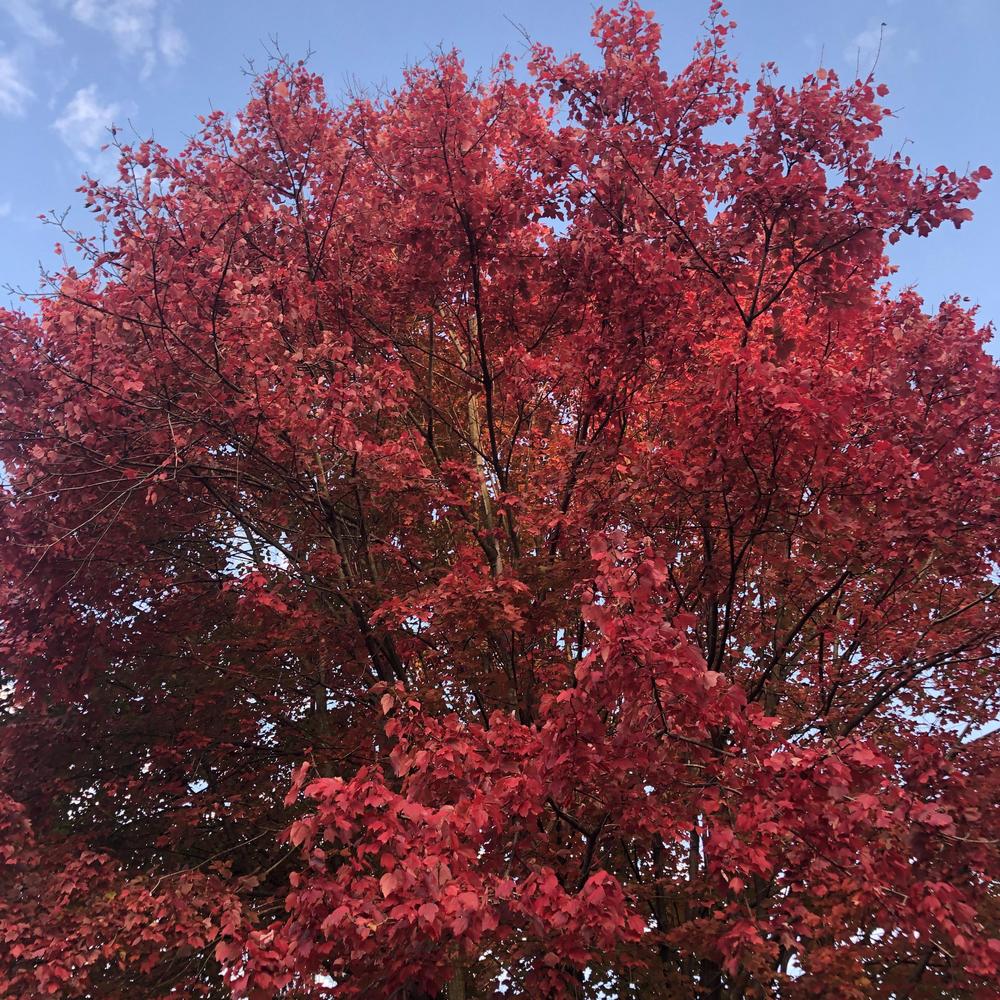As weather patterns continue to change and there are more instances of flooding and inundation from significant rainfall, it will become more and more necessary to develop home landscape infrastructure to help capture and mitigate stormwater runoff and rainfall. The home garden can use many methods to capture rainfall.
Save the Water
There are many ways that stormwater can be captured from the gutter systems of houses. There are various sizes of water tanks and rain barrels that can be easily adapted to capture rainwater from homes. This water then can be used on an as needed basis to water and irrigate plants in the garden. Ideally, every downspout on the house could be retrofitted with a rain barrel.
Plant Trees
One of the easiest solutions is to plant large shade trees and street trees that have aggressive root systems that will absorb large amounts of water. Some of these trees include the London plane tree. Platanus x acerifolia Exclamation!™ is an introduction from the Morton Arboretum and the Chicagoland Grows Program which has a very upright pyramidal habit. It is an exceptional selection which has been recognized by the Pennsylvania Horticultural Society’s Gold Medal Plant Program. It makes both an excellent street tree and shade tree and can survive both very dry and very wet conditions.
There are many selections of the red maple, Acer rubrum that are also excellent for absorbing water during periods of inundation. Some of these selections include October Glory®, Red Sentinel™, and Red Sunset®. As the name implies, red maples are notorious for exceptional red fall color. This native maple is one of the very best of the street trees for its adaptability to a host of urban conditions including drought, as well as the ability to grow in very poorly drained areas. Nyssa sylvatica, the black tupelo, is another fantastic native tree that should be planted to mitigate the impacts of stormwater. There are many outstanding selections including Firestarter® with an upright pyramidal habit, and Green Gable™, which has a more rounded canopy. Red Rage® and ‘Wildfire’ have exceptional fire engine-red fall color.

There are many types of rain gardens that can be considered for the home garden. Typically, soil is excavated out of the garden, creating a depressed area that is below the existing grade on a property. Additionally, the surrounding soil can be graded, so when it rains the stormwater runoff is directed toward this depressed or sunken portion of the landscape. If this area is fairly large and has a reasonable depth, it can capture large amounts of precipitation during a rain event. This area will fill up with water and over time the accumulated water will slowly percolate into the surrounding soil, therefore significantly reducing stormwater runoff. For a rain garden to be successful, it should be planted with shrubs and perennials that can withstand being submerged for extended periods of time and can help to absorb excess moisture.
Some great choices of perennials for the rain garden include sedges such as Carex amphibola, C. comosa, C. emoryi, C. stricta and C. vulpinoidea. Many ferns can take these periods where they are very wet including the lady fern, Dryopteris marginalis; Athyrium filix-femina; marginal wood fern, ostrich fern, Matteuccia struthiopteris; sensitive fern, Onoclea sensibilis; cinnamon fern, Osmunda cinnamomea and the royal fern, Osmunda regalis var. spectabilis. One of the most beautiful of all the rain garden perennials are the Joe-pye weeds. These robust and stout plants are characterized by an abundance of dome-shaped purple flowers in the late season. Eupatorium purpureum ‘Gateway’ can reach 5-7’ feet tall and the new ‘Little Joe’ is a much more diminutive form. The cardinal flower, Lobelia cardinalis, has bright, vibrant red flowers that are a magnet for the Ruby-throated Hummingbird. Other great flowering plants included the pink flowered turtle flower, Chelone lyonii ‘Hot Lips;’ Hibiscus coccineus, which reaches nearly eight feet tall with stunning late summer red flowers, and the white, candelabra-like flowers of the culver’s root, Veronicastrum virginicum, which makes a great architectural statement.
The habitat in the rain garden can be further developed by adding shrubs. There are several shrub-like hollies that make a great statement in the rain garden. In the wild, the winterberry, Ilex verticillata, grows on the edge of ponds and lakes making it a perfect plant for wet areas in the garden. This multi-stemmed shrub is covered in very ornamental berries from September to March. ‘Winter Red’ has an abundance of bright red fruits. ‘Winter Gold’ has an equal abundance of salmon-orange fruits.
‘Maryland Beauty’ is a heavy-fruiting selection. For good fruit, it's suggested that you also include a male pollinator such as ‘Southern Gentleman’ in the garden. The inkberry holly, Ilex glabra, is a small to medium-sized evergreen shrub that thrives in wet soils. The narrow, shiny, evergreen leaves are great in combination with other plants with ornamental winter stems and winter berries. ‘Shamrock’ is a more diminutive selection and Ilex glabra Strongbox® is a new selection that is being promoted as a boxwood substitute.
The native buttonbush, Cephalanthus occidentalis is another great shrub to consider. At maturity, it can reach up to ten feet tall. In mid-summer it is covered with an abundance of orb-like white flowers. Many of the native butterflies, including the swallowtails, are attracted to the flowers of the buttonbush. Many of the red-stemmed dogwoods are also excellent for winter interest and can thrive in rain garden conditions. One of the best is Cornus sericea ‘Cardinal.’ ‘Cardinal’ has stems that reach up to seven feet tall. In the winter, the stems turn a brilliant pinkish-orange. The stems are offset best with an evergreen backdrop, such as the inkberry holly or the white cedar, Chamaecyparis thyoides.
In addition to being a great landscape feature that captures water and mitigates stormwater, the rain garden adds considerable beauty to the garden and landscape. Additionally, the rain garden plays an important role in filtering out pollutants from runoff from the garden.
 Andrew Bunting is Vice President of Horticulture at The Pennsylvania Horticultural Society and leads the utilization of planting and design to promote environmentally sound gardening practices at PHS. Andrew has worked at the Chicago Botanic Garden, Chanticleer Garden, and the Scott Arboretum for a tenure of 27 years. He has received the American Public Gardens Association's Professional Citation, Chanticleer Scholarship in Professional Development, and the Certificate of Merit from the Pennsylvania Horticultural Society. He also serves on the Board of Magnolia Society International. Andrew published his first book in 2015, "The Plant Lover's Guide to Magnolias".
To learn more about The Pennsylvania Horticultural Society, please visit PHSOnline.org.
Andrew Bunting is Vice President of Horticulture at The Pennsylvania Horticultural Society and leads the utilization of planting and design to promote environmentally sound gardening practices at PHS. Andrew has worked at the Chicago Botanic Garden, Chanticleer Garden, and the Scott Arboretum for a tenure of 27 years. He has received the American Public Gardens Association's Professional Citation, Chanticleer Scholarship in Professional Development, and the Certificate of Merit from the Pennsylvania Horticultural Society. He also serves on the Board of Magnolia Society International. Andrew published his first book in 2015, "The Plant Lover's Guide to Magnolias".
To learn more about The Pennsylvania Horticultural Society, please visit PHSOnline.org.